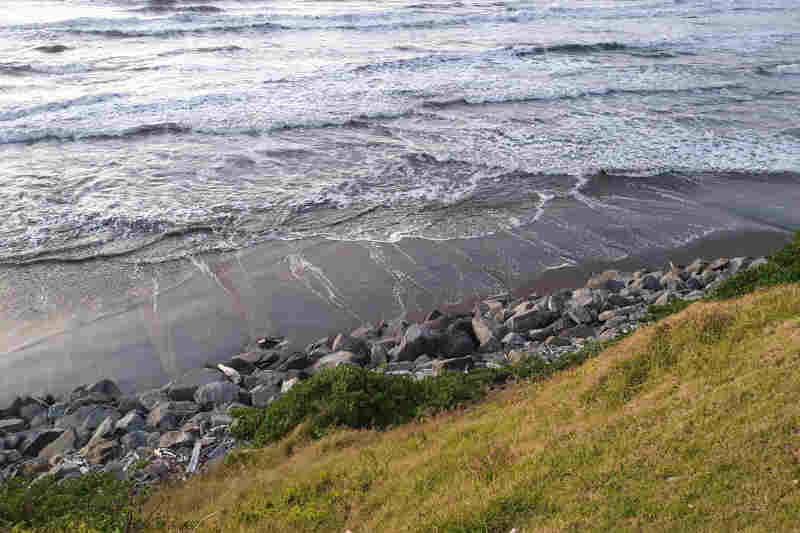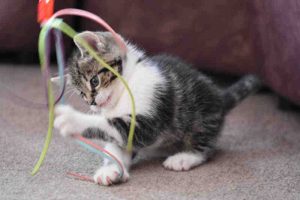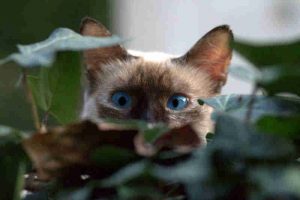The Scientific Method is a well-defined process through which we can formulate and test ideas that explain our observations of reality. The process can be summarized as: Make an observation, create a falsifiable hypothesis to explain the observation, make a prediction from the hypothesis, test the prediction, refine and repeat. When we have confidence that a hypothesis has been validated or invalidated, results may be published in a peer-reviewed journal.
The Scientific Method Step-By-Step
Here are the steps of the scientific method:
1. Make An Observation
All science begins with an observation of something happening in the universe. Scientific observations must be able to be measured, and they must be well-defined so that others can repeat the measurement.
It could be that we released our grip on a rock and it fell to the ground. Or we push against a tree branch and it moves out of the way. Or any of the countless other observations we make on a daily basis.
The important point is that we notice something happening out in the universe.
Usually we have to notice something happening multiple times before we pay attention to it.
2. Create A Falsifiable Hypothesis
Once we have made an observation, we start to wonder why that thing happened.
We do this by noticing further details and asking questions about what might be going on.
Ultimately we form a testable and falsifiable hypothesis.
A hypothesis is falsifiable when it is possible to make an observation that disproves the hypothesis.
In the case of our rock falling to the ground, our hypothesis might be as simple as all rocks fall when released. This is falsifiable because it will be disproved if one or more rocks do not fall when released.
3. Make A Testable Prediction
Next, we predict a new behavior from our hypothesis. The new behavior must be something that is specific, is repeatable, and can be measured.
With our rocks falling to the ground, a testable prediction might be if I collect 200 rocks from the local river bed, hold those rocks 4 feet above the ground, and release them, all of the rocks will fall.
4. Test The Prediction
A prediction is tested by designing an experiment such that we can make measurements with known uncertainty, and then running that experiment and making those measurements.
Usually we want to start out with our testing in a controlled environment.
So we grab a wheelbarrow, go and collect 200 rocks, and bring them back to our lab.
We methodically work through each rock, picking it up, holding it 4 feet in the air, and releasing it.
We record our measurements for every rock.
And in this case, we find that every single rock falls.
If even one rock did not fall, our hypothesis would be disproved.
5. Refine The Hypothesis
Science runs in a never-ending loop. When we have evidence that supports a hypothesis, we typically start looking for edge cases where it might fail. And when our hypothesis is disproved, we either throw it out completely, or narrow our conditions to find out under what circumstances it holds.
New science almost always happens at the boundaries.
No-one would be particularly surprised that all rocks fall when we drop them.
But it turns out that when we have a really small rock, it can actually float on the air. In common parlance, we refer to these really small rocks as dust.
As we gather more evidence, our confidence grows in our hypothesis and the circumstances in which it is applicable.
We think critically about what might need to be true for our hypothesis to fail. We formulate new hypotheses around that. And we then design and run new experiments to test these new hypotheses.
In the case of our rocks, the application of this process eventually grows our simple idea into concepts like gravity and general relativity.
Key Underlying Concepts In The Scientific Method
Science is all about making observations of the universe, coming up with ways to explain those observations, then running tests to validate our explanations.
The core concepts used in the scientific method are:
Falsifiability
Central to all of science is the concept that we can never prove our ideas about the universe. We can only ever disprove them. In order for an idea to be scientific, it must be possible to disprove it.
A hypothesis that can be disproved is known as falsifiable.
As an aside, this means that if you ever see something advertised as scientifically proven, you can be absolutely certain that it isn’t.
Replicability
In order for research to be scientific, the methodology must be sufficiently well described that other scientists can replicate the research. In simple terms, this means that there must be a clear and complete description of the experimental setup, what was done, and how the results were reached.
Research that can be replicated by an independent entity is known as replicable.
Uncertainties In Measurement
All measurements we can make have a built-in uncertainty. It’s probably easiest to think of this as being akin to precision.
Any device we can construct to make a measurement has a built-in limitation to its precision. If I buy a 1 meter ruler at the store, it will typically be marked out in millimeters.
Way back when I was in my first year at university, we ran experiments around the precision of measurement in the lab. It turned out that for most of the class, we could reliably measure to within somewhere between 0.1mm and 0.2mm with 1mm gradations on the scale.
Furthermore, this precision limitation applies to every measurement. These uncertainties accumulate, and math has been developed that allows us to propagate them throughout any calculations we might perform.
In science, we include uncertainties when we write down our measurements. The magnitude of the uncertainty depends on how we make the measurement.
For example, if I were to measure the width of my computer monitor with a tape measure with 1mm gradations, I might give its width as 423.3mm +/- 0.4mm. In this case, the +/- 0.4mm is the uncertainty.
If I were to measure the same screen using my mark 1 eyeballs, I might specify the width as being 45cm +/- 5cm.
This difference comes about because I can make a much more precise measurement with a ruler than I can by simply looking at my monitor.
Measurement uncertainties are sometimes known as measurement error. I prefer to avoid using the term error because most people do not know what error means in that context.
Statistical Significance
In order for results in science to be meaningful, we must gather enough data for it to be statistically significant.
It is almost never enough to make just one measurement.
As a guideline, at least 20 measurements are required for each possible combination of variables in order for the results to be statistically significant.
If you think back to high school math class, this is what confidence intervals are for.
The more observations we can make that support our hypothesis, the more confident we become that it is correct.
Control Groups
A control group is group that is treated identically to our test group except that they are not exposed to the thing we are testing. The idea is that if the response of the test group diverges from that of the control group in a statistically significant way, we can have confidence that the thing we are testing is real.
Control groups are usually used in studies involving complex systems with emergent properties, such as living organisms.
Occam’s Razor
For anything we can observe in the universe, it is possible to come up with an essentially infinite number of explanations. In science, we usually use a modified version of Occam’s Razor and choose the simplest theory that explains the observations.
This prevents things from becoming unnecessarily complex.
As we learn more about the universe, our theories evolve.
For example, there is a branch of physics known as kinematics which is the basis for much of our modern civilization. The quick version is that kinematics tells us how to understand things like distance, velocity, and acceleration.
If kinematics were to suddenly work differently, any scientist who somehow survived would probably stop whatever they were doing and try to figure out what was going on.
The equations of motion that describe kinematics have been around for hundreds of years. They work to a high degree of precision for objects that are about as big as us and about as slow as us.
And these same equations break down almost completely for objects that are huge, for objects that are moving very fast, and for objects that are tiny.
We still use kinematics every day because the uncertainties in our measurements are greater than the divergences at our scale.
Or put another way: Even though we know there are more accurate ways to model the system, we also know that doing so is pointless for things that move like we do.
Confirmation Bias
Confirmation Bias occurs when the researcher gives unwarranted weight to experimental results that support their hypothesis.
The more complex the system being studied, the easier it is for confirmation bias to creep in unnoticed.
Confirmation bias is often unconscious, so researchers take steps to minimize the risk of it occurring.
Peer Review
Peer review is a process in which other scientists check our methodology and results, and provide feedback before they are published in peer-reviewed journals. While this process has some flaws, it does ensure that absolute nonsense is usually squashed.
As a rule, the further our claims diverge from current accepted science, the more evidence we must provide to support them.
If I make a discovery that an electron behaves in anomalous ways in highly specific rare circumstances that can be easily replicated, and my methodology is sound, a well-written paper will typically pass the peer review process.
On the other hand, if I make a discovery that all rocks float in the air, I’d better have vast amounts of evidence supporting my claim.
What it comes down to is how plausible other experts believe our methodology and ideas are, and how much evidence we have.
The Scientific Method In Psychology
The human mind is a complex system, so psychologists make modifications to the basic scientific method in order to minimize the risk of contaminated outcomes.
An experiment is designed to test a specific idea.
This usually involves exposing a group of participants to one or more stimuli and then measuring their responses. The control group is exposed to different stimuli.
It is not entirely uncommon for the participants to be told the experiment is about something else entirely to avoid skewing the data.
Sometimes double blind studies are performed, in which the people implementing the experiment do not know what is being tested, who is in the test group, and who is in the control group. This helps to minimize the risk of the implementers unconsciously pushing participants towards specific responses.
In triple blind studies, even those who are tasked with analyzing the data are unaware of the hypothesis.
Supercharge Your Hypnosis With The Scientific Method
As practicing hypnotists, we are often more interested in the observation phase of the scientific method. When we have made enough observations, we can form hypotheses and then design experiments to find out what happens.
The way this usually happens for me is first I will randomly notice something. Years ago, one such occurrence was when I whimsically said Good morning to someone while I was leaving work late on a Friday afternoon. They responded with an extremely firm Good Afternoon.
This led me down a rabbit-hole of experimenting with what I refer to as temporally inappropriate greetings. For years, I would randomly greet people using greetings that did not match the time of day.
Over time, I developed a fairly firm picture in my head of how people respond. I also kept a journal in which I wrote down how people responded, being careful to not include any information that could identify individuals.
After making thousands of observations over the course of years, I am in the position of being able to formulate a hypothesis. If I were so inclined, I could design an experiment to test this hypothesis.
If I were to form that hypothesis right now, it would be something along the lines of people usually just respond with whatever greeting I use. Except at the end of the last day of work for the week.
This tells me that they’re not really paying attention, which is a useful thing to know when doing hypnosis.
Their conscious mind is already partly offline.
This is a useful thing to be aware of as a hypnotist, because it gives me one more thing I can use to disrupt someone’s chain of thought and begin to lead them into hypnosis.
It does not matter in the slightest if it doesn’t work on everyone, since I’m just going to segue straight into something else anyway.
Every single thing we can do that someone else can observe will either send them deeper into hypnosis, or will bring them further out.
The Scientific Method In Hypnosis Practice Step-By-Step
To borrow from the scientific method for practicing hypnosis, make observations about how people tend to respond to specific things you do. Be sure to keep notes so that you know it’s not just your imagination. Then when you notice things that seem to cause hypnotically useful effects, do those things at appropriate times to aid your hypnosis.
Unless you are aiming to publish your results, it is often enough to simply make a few observations that you can draw on.
In the case of my example of greetings, I don’t really know if the effect was the greeting itself or something about my manner when I do that. I’m a scientist, so I could test that if I wanted to.
But because I’m not publishing it in a peer-reviewed journal, it doesn’t matter too much. In the event that I decide to publish, I have a foundation of observations from which to form my initial hypothesis.
For now though, my unconscious mind knows that when I do a certain thing, people seem to be more likely to go into hypnosis. Even if they are pushed further out of hypnosis, all I have to do is notice that it’s happened and take appropriate steps to move them back.
Either way, they end up fractionated and the end result is that they go deeper into hypnosis.
When you stack up dozens or even hundreds of these effects, even if only half of them work, you end up with highly effective hypnosis.
Here’s what to do step-by-step:
- Make some observation of a response that someone has when you say or do something.
- Be curious about what might be going on with that response.
- Try doing the same thing to a bunch of different people. Try variations.
- Notice how each person responds, and keep notes so you can form a picture of what might be going on.
- Over time form a belief based on real data then use that belief in conjunction with other things to enhance your hypnosis.
- Refine your beliefs based on how people respond out in the real world.
Enhance Your Hypnosis On Autopilot
One of the biggest early gains that I had when I was first learning to hypnotize others was doing nothing more than paying attention to other people.
There was a distinct switch in my mind where I went from walking through the world in a kind of daze, to actively noticing the states that other people were in.
After a little while, I realized that I could make these observations even more effectively if I were in self-hypnosis while making them.
When we’re in self-hypnosis, our minds tend to be sharply focused. And that makes observations a lot more straightforward.
You can also use it to turn the entire process into a habit so that it happens automatically.
And best of all, it’s easy to build a switch inside your mind to self-hypnotize on demand.



